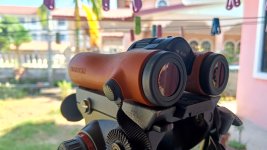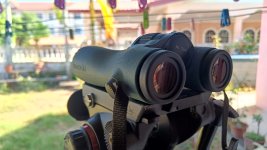Good evening,
I have NL 8x42/12x42. Former owner Habicht 8x30W Curio CL NL 10x32/42. I'm obsessed with microcontrast to get the best resolution on details. Well, I got rid of the NL 10x32/42 because in my eyes they weren't sharp enough. Question: does the NL 8x32 hold up to the NL 8x42 in terms of microcontrast/resolution?
greetings from Venice
I have NL 8x42/12x42. Former owner Habicht 8x30W Curio CL NL 10x32/42. I'm obsessed with microcontrast to get the best resolution on details. Well, I got rid of the NL 10x32/42 because in my eyes they weren't sharp enough. Question: does the NL 8x32 hold up to the NL 8x42 in terms of microcontrast/resolution?
greetings from Venice











